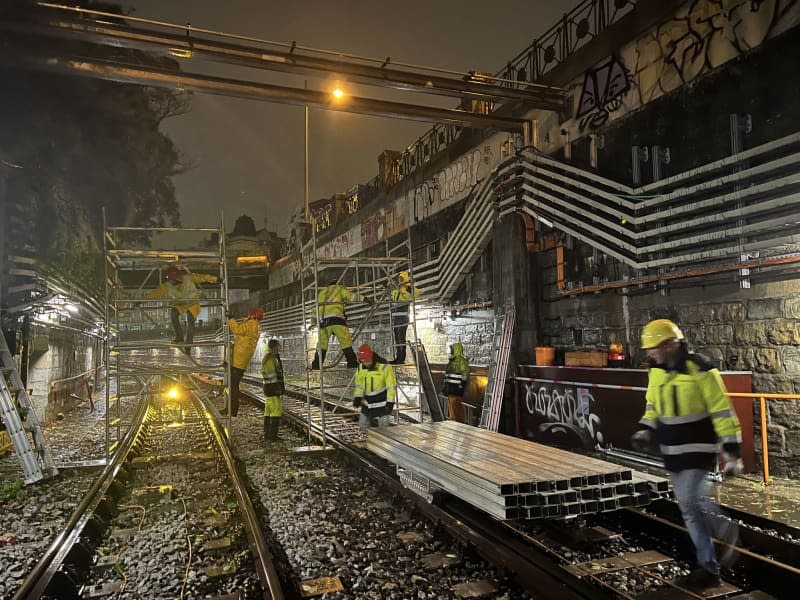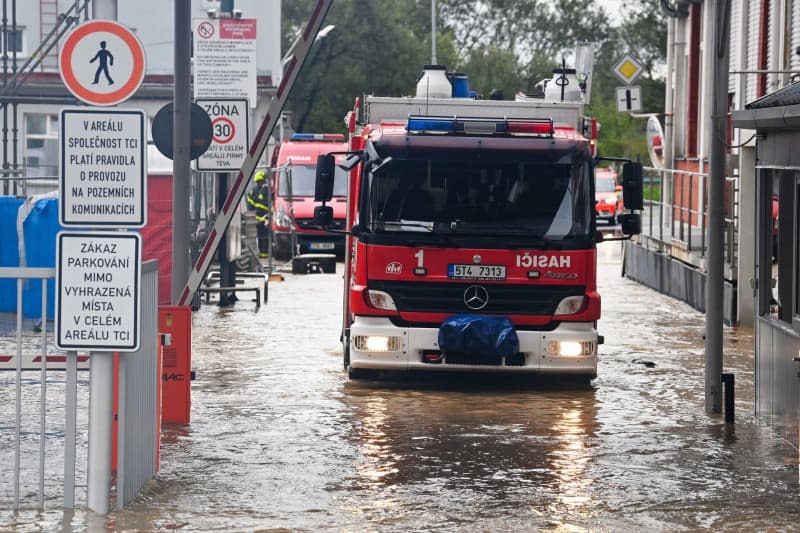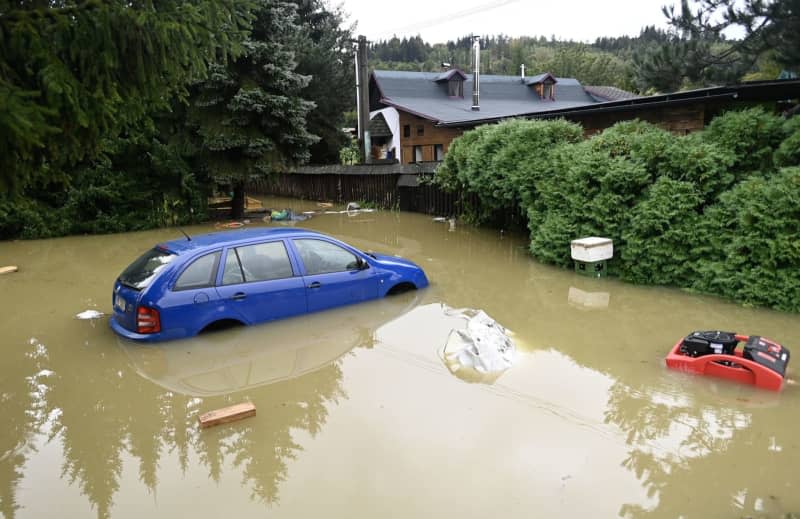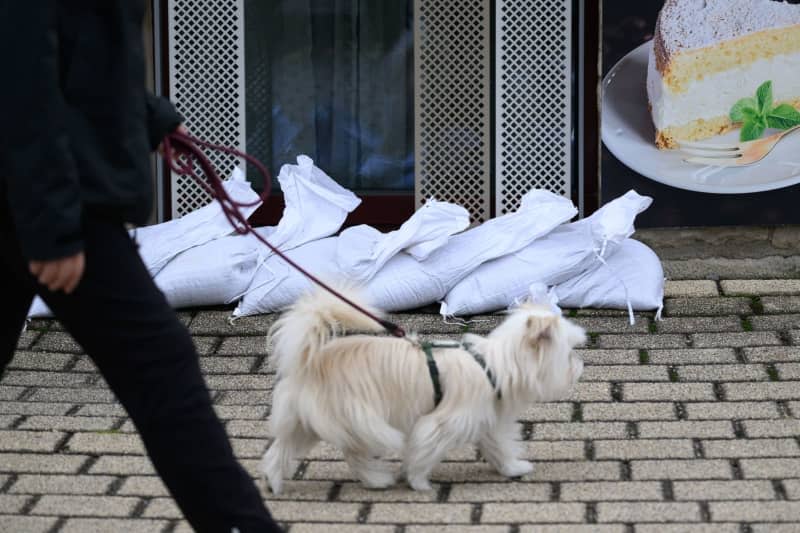Rivers swollen by downpours flooded parts of Central Europe on Sunday, resulting in the deaths of two people in Austria and Poland, forcing thousands to flee their homes, and wreaking havoc on electricity and transport infrastructure.
In Poland, Prime Minister Donald Tusk confirmed the country’s first death due to the high waters as he attended an emergency briefing in the small town of Kłodzko, not far from the Czech border.
Tusk called the situation in south-western Poland “dramatic” and urged residents to heed local evacuation orders.
The water level of the Nysa Kłodzka river in Kłodzko was 6.65 metres on Sunday morning. The average water level is 1 metre.
The police said the fatality was a man whose home had flooded in the village of Krosnovice, not far from Kłodzko.
Tusk said that 1,600 people in the Kłodzko district had been brought to safety so far and that he expected further evacuations.
Parts of the hardest-hit areas have seen disruptions to power supplies and mobile communication networks. Kłodzko residents have been told to boil their tap water before drinking it.
Across the border in the Czech Republic, authorities said at least four people were missing.
Czech Prime Minister Petr Fiala called on citizens to follow the instructions of the emergency services, noting that some people are refusing to obey evacuation orders and leave their homes.
“By doing so, they are endangering not only themselves but also those people who will then have to try to rescue them when things get dramatic,” he said on public broadcaster CT.
“We have to expect that the worst is not yet behind us,” he warned.
In the city of Opava and other border areas near Poland, thousands of people had to be evacuated from their homes as entire communities went under water. A mudslide cut off the mountain village of Malá Úpa from the outside world.
More than 250,000 Czech households were left without electricity, the CTK agency reported, citing energy suppliers. Rains had softened the soil, causing numerous trees to fall on overhead power lines and high-voltage lines.
There were tense scenes in Austria, too, where a firefighter died while working in a flood-hit building in the state of Lower Austria, which surrounds the capital Vienna.
“We are experiencing difficult and dramatic hours in Lower Austria,” said state Governor Johanna Mikl-Leitner.
“For many people in Lower Austria, these will be the hardest hours of their lives,” she added. “We will do everything we can to hold back the water and protect the country and its people.”
Lower Austria was declared a disaster zone after several rivers in the state rose dramatically.
In some communities north of Vienna, the fire brigade had to rescue people trapped in their houses overnight. One person had to be rescued after driving into the floodwaters of the Pielach river, west of Vienna. The fire brigade is using rubber dinghies in some places.
The water on the Wien river that runs through Vienna was flowing high and fast on Sunday, however in most places the metre-high walls were still holding.
The water level on the river at the Kennedy Bridge in western Vienna rose from 50 centimetres to 2.26 metres in the course of one day, emergency authorities said.
Walking and bicycle paths are flooded, and restaurant terraces on the banks of the river are under water.
In the suburb of Penzing, north-west of Vienna, the Wien river burst its banks in some places. Homes were evacuated while streets and an underground car park were under water.
However, Mayor Michael Ludwig reassured the public, saying: “All in all, we have the situation well under control.”
He said he was heartened by the fact that the Danube – main river in Vienna – was stable.
At least four people were killed in eastern Romania, authorities said on Saturday, after the Eastern European country was battered by rainstorms.
Rail services in multiple countries were in disarray on Sunday.
Vienna’s underground lines have been hit by disruptions and Austrian rail operator ÖBB suspended train services on a line south of the Danube.
Cross-border rail connections between Poland and the Czech Republic have also been suspended.
Dams bursts in Poland and the Czech Republic
A second dam has burst in south-western Poland following heavy rains, authorities said on Sunday.
The dam in Stronie Śląski, in the Lower Silesia region, gave way and water on the Biała Lądecka river is now flowing unimpeded into the Nysa Kłodzka catchment area, a metrological network said.
The town of Stronie Śląski is located in the Kłodzko Valley on Poland’s border with the Czech Republic.
Police have sent a rescue helicopter to the area to bring people stranded by the water to safety. Army soldiers are also on the scene.
On Saturday evening, a dam in the nearby mountain village of Międzygórze failed.
Since Friday morning, more rain has fallen in south-west Poland than during the so-called millennium flood of 1997, and the alert level has been exceeded at 47 gauging stations across the country.
In the south-west of the Czech Republic, the Husinec dam in the foothills of the Bohemian Forest overflowed due to the flooding. The highest flood alert level was reached in the town Litomerice on the Elbe river.







Source Agencies



